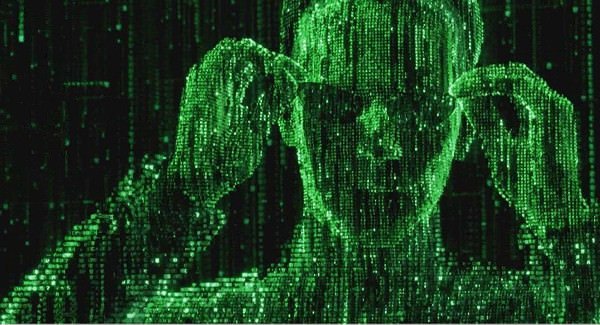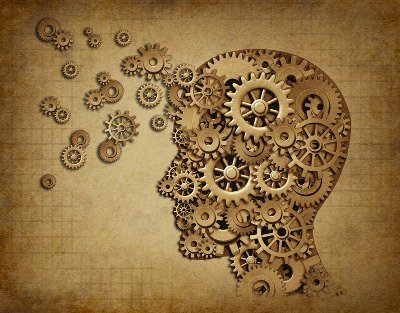Cryptocurrency against the system ! Part 3 : The currency of the future.
Part 1 : Who’s the enemy?
Part 2 : Can Cryptocurrency defeat private-sector banks?
"Utopia is just a reality that has not yet been built." - @algo.coder

So in the first part, we identified the real enemy of all cryptoenthusiasts out there : the private-sector banks. In the second part, we saw that cryptocurrencies in their current forms are no menace to the established elite, meaning the real owners of Central and Investment Banks.
In this third part we will see what the currency of the future should be to achieve the revolution that Satoshi Nakamoto envisioned when creating Bitcoin.
Specifics
This part will be a bit technical but still understandable by each and every one.
Technology :
- This currency could be based on any technology, but using the blockchain could ensure that no one can cheat the system and that the rules of new currency creation are immutable and known by all users.
- The Proofing system is not yet defined. Proof-Of-Work is too much resource-consuming, and as we will see later, there’ll be no reward for miners (or not based on their computational power). Proof-Of-Stake is more promising as it just demands participation and possession of a said currency, and as everyone will be possessing some, it might be a good alternative. The best solution will surely be an hybrid, or a new proofing system such as Proof-Of-Human-Work.
- There will need to be a voting system implemented in the blockchain – but with universal suffrage and not only with a voice given to the block creators.
Principles :
- A fixed inflation rate will be embedded in the source code and it will never change. The best rate seems to be 2 % as it is the objective of most Central Banks out there, so it should be a value that allows the growing of the economy and ensures there’s no shortage of currency. This way, no anticipation will be needed to determine the prices inflation, or the wages progression, this fixed value of 2 % will be known by all and automatically enforced by the blockchain.
- No multiple wallets will be allowed : at the creation of one, a system of identification must be put in place (digital prints is the best way to go with the current technology). That won’t compromise privacy as only addresses will be visible by peers but the wallet’s address should be the result of this identification process once encrypted to ensure people only have one wallet. A system must be created to allow companies to have a wallet with a different way of identification. But less precautions can be taken in the creation of "non-human" wallets as they won’t get a fraction of the money generated by inflation.
Innovations :
- Inflation will be divided in 3 parts : Part of the inflation generated will be put in a common fund, creating a social security system inside the currency’s core. Another part will be equally distributed between all people, no matter the amount of currency they currently possess (companies’ wallets will be excluded of this distribution). A last part will be used as incentive for miners or people ensuring the security of the blockchain, depending on the proofing system retained.
- The rewards for the miners will be distributed via a unique pool embedded in the blockchain, so that no group of individuals can take a big part of rewards. That will incite all people to give a little bit of computational power (to get their part of the reward given at each new block), but not much because as soon as they give more than the mean of all the other miners, they begin to offer the part of the reward generated by their extra computational power to those who give less than the mean. Rewards must be high enough for people to want to delegate a part of their computational power to the maintaining of the blockchain.
- The social security system will be used to replace state-sponsored social security. By voting, people will determine what’s the level of coverage for all of the different programs, what this fund will be used for and if additional contribution can be made to get better coverage levels. This fund could be used for health care, for infrastructure projects, for educational purposes, for unemployment insurance, and everything people can think of. The system of votes and how to then execute the insurance contract or the execution of whatever has been decided to use the common fund for, will surely need a technological innovation (such as smart-contracts). Some people may locally want something that not all people around the world will want, so sub-contracts between few people and the common fund must be allowed (or sub-common funds alimented by a delegation of part of their rights in the common fund), retaining for those people a part of the coverage on all other global contracts, with a possibility of being fully covered with additional contribution. This is the main innovation needed for the currency of the future and this will be the part that will be the most complicated to put in place.
Value of the currency :
As we saw in part 2, to protect the currency from wrongdoers (meaning investment and central banks), we can't tolerate that this currency be exchangeable with any other currency they might be able to possess.
That point is absolutely crucial but really hard to apply.
There are still a few solutions that can work :
- Never be listed on an exchange.
- Creating since the beginning a huge amount of currency (like hundreds of trillions) allocated to a non-usable wallet (making it totally worthless in terms of other currencies) that will be burned at a certain rhythm determined in the source code. It should offer enough time for the currency to become independent and current currencies to be depreciated against this new currency.
- Embedding a system that won't allow transfers of currencies with a wallet that hasn't been generated on the blockchain, making it difficult for exchanges to offer this currency in their catalog, as they always need multiple wallets and addresses to manage the flow.
- Using the system of identification at the creation of a wallet more restrictive for non-humans. So we could be able to reject exchanges, banks, and financial institutions applications to get one.
Pros and Cons
The main problem is the realization of such a blockchain. The main idea of social security embedded in the currency creation will be the main challenge for programmers who will decide to try to transpose this idea to reality.
A lot of things are needed : How to create a new program for the fund ? What should be the rule of majority ? Can someone decline a service proposed by the fund ? If so, how will he be compensated : by getting currency back or by getting better coverage in other programs of the fund ?
There's a lot of problems arising from this innovation, but problems only exist to be met with solutions.
Another problem will be the securisation of the blockchain and the rapidity of transactions. As it is a currency that aims to be global, it means a number of transactions that will be huge (and at each block, inflation implies that some new currency must be distributed : to the common funds, to all human wallets, and equally to miners, generating even more transactions). We could, for that particular problem, imagine that only one block each hundred blocks will trigger redistribution. The size of the blockchain will also be a problem and technological solutions must be found for all these difficulties.
The main advantage will be the social security system that will now be offered to all people in the world, and at the same levels for everyone, without needing taxes or other uptake systems, as it will be alimented with inflation. It will on the long run replace states as it should ultimately be used as a common world budget for all infrastructure projects as well as traditional social security topics. This advantage will also be the principal constraint in developing such a currency as it is the most difficult to program.
This series is now finished, and my next task is to begin to design such a currency. As an hobbyist programmer, I’m confident I can try and maybe attract some convinced people to make this work or at least to publicize the project, but that won’t be something that will be done in a day, even a year or a decade. Hope will always be there. Future will never run out of time, and ideas and dreams are immortal.
I will, with no doubt, publish some new reflexions as I progress in the path of making this idea a reality. And I also have other thoughts I'd like to share with you on this subject and many others.
Thanks for reading and see you soon !

To show your support : please upvote, follow, resteem or comment !
Or all of the above
A good read !
Thank you, I hope it wasn't an April's Fool ! :D
Happy Easter !
I suspect you visited my Easter topic(s) :)
Happy Easter to you as well !
I did, you got me looking forward to 2029.
Never been so impatient in my life !
Hi @algo.coder
Excellent article. I subscribed to your blog. I will follow your news.
I will be grateful if you subscribe to my blog @user2627
Good luck to you!
Hi @user2627
Thanks for your encouragements ! It goes straight to my heart.
I will follow you, but I don't speak russian :(
Hope you'll write articles for non-russians too in the future !
Good luck to you too and have a nice day !